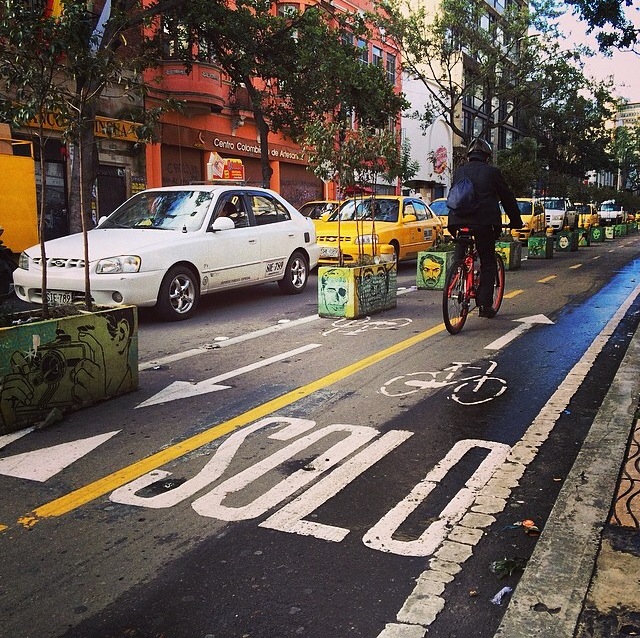A common theme running throughout the APA’s 2014 National Planning Conference is how many of our planning tools, from parking policy to zoning, can accommodate a renewed thirst for urban living driven largely by Millennials and Baby Boomers.
Fifty years of auto-oriented city building is what planners largely have to work with in all but the historic neighborhoods developed before the ubiquitous spread of the private automobile. This situation has created a need to adopt innovative techniques to create people-oriented spaces where vehicle flow was previously the objective.
One concept derived from this movement is Tactical Urbanism, as explained by Valerie Watson from the Los Angeles Department of Transportation in a session called Creatively Transforming Streets for People.
The idea behind Tactical Urbanism is to implement small, realistic community-oriented projects that cumulatively, over time, can improve livability. For example, Watson said, one could shut down a street for a day and open it up to pedestrians, cyclists, food trucks and even set up a pop-up cafés.
Beyond the livability improvements, such activities also benefit from the power of demonstration from normal residents transforming a place to be more community-oriented. As has been seen throughout North America, these activities can often set the stage for more permanent fixes like parklets, bicycle corrals, extension of cafe spaces into parking spots and the creation of small plazas.
An example from Santa Monica combined this approach with public engagement was explained by Jason Kligier, of the City of Santa Monica. The event was called Pop-Up MANGo, which stands for Michigan Ave Neighborhood Greenway (MANGo).
The Greenway, Kligier said, would connect new and proposed bike lanes via Michigan Avenue in the city’s Pico neighborhood – a residential area through which cars tend to pass through over the posted speed limit. The new pedestrian and cyclist orientation would mean creating an inviting streetscape of sidewalks, calm roadways, increased trees and landscape.
The pop-up event in Santa Monica included the addition impermanent features like curb extensions, enhanced landscaping, places for impromptu neighborhood interactions, wayfinding signage and various traffic calming measures. Food trucks, music and interactive activities created a festival-like atmosphere for the more than 400 attendees.
When asked about how they felt about the installations, a majority of neighbors were in favor of the traffic calming measures.
Another way in which planners are working to make cities more livable was discussed in a session on Monday, where attendees learned about techniques in implementation of cap parks over highways. Not only do such efforts create green space in areas where there is little room to accommodate new parks, but they also reconnect neighborhoods that had been torn apart by multiple lanes of speeding traffic.
This movement toward reorienting roadways into more hospitable environments for other users was echoed further in sessions like Building the New American Streetscape, Transforming Streets and Reclaiming the Suburban Corridor, among others.
There are some hints of this movement in Cincinnati as well, including the city’s various on-street bike corrals, Walnut Hills Streetfood Festival, two-way street conversions, Second Sunday on Main, road diets and Cincy Summer Streets which will have its inaugural season this year.
